For centuries, bears have known to attack humans with early day explorers narrating horrible experiences with them. In the early days, there was a funny story that went around among the Yukoners and Alaskans.
They believed that bear and humankind were closely related. Despite this assumption, they knew that bears could be dangerous. They, however, thought that if you met with a bear, you needed to raise your hands on your head and talk to the bear “Hello brother bear, I didn’t mean to agitate you. I will move from your territory now and leave you in peace.”
After this, one would slowly walk away from “brother bear” unharmed. When this legend seemed to work, it is a dangerous move.
Identifying The Different Types of Bear
An encounter with a bear is a terrifying confrontation you can experience during your camping or exploration expedition. Your approach on how to survive will depend on your ability to identify the bear and its attitude towards you.
Your speed and disposition to protect you from the animal will also determine how you will come out of the confrontation. Below are types of bear and their characteristics.
The black bear- this is the smallest of all bear species, and their color can range from black to blond. It’s more of a scavenger than a hunter and, therefore, found near humans. His love to live near man is probably brought about by the fact that he can easily find something to eat from man’s leftovers. This fact has also led to him not being afraid of humans.
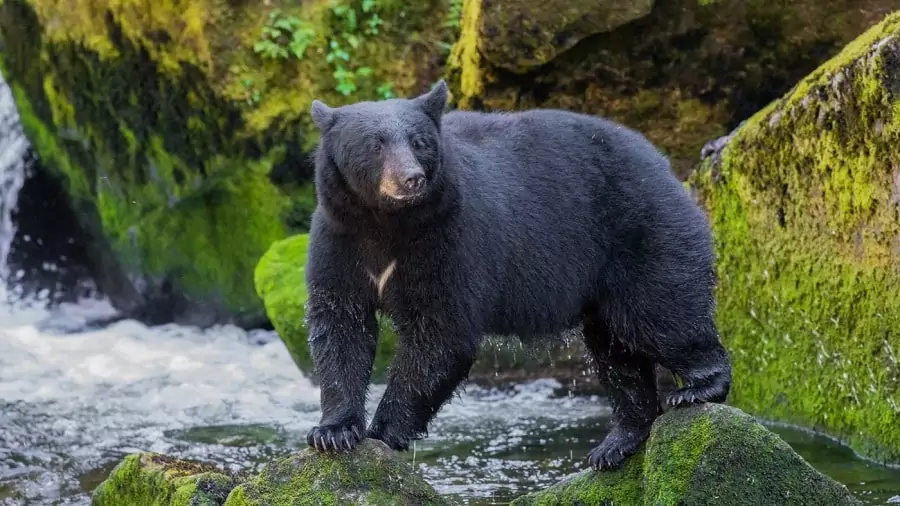
The black bear will rarely attack you unless he confuses you for food, thinks you have food or suspects that you are rogue. To know you are dealing with a black bear, look out for the following features;
- Straight face and backline.
- A small head.
- Dark colored short claws.
- He has a lighter muzzle than the rest of the body.
- Most black bears have a white patch on the chest or throat.
The grizzly bear- this bear is apathetic to humankind and has no fear towards the man at all. It is huge in size compared to the black bear but a little smaller than the polar bear. He is, however, very unpredictable as he can either run away for seeing a man or decide to attack.
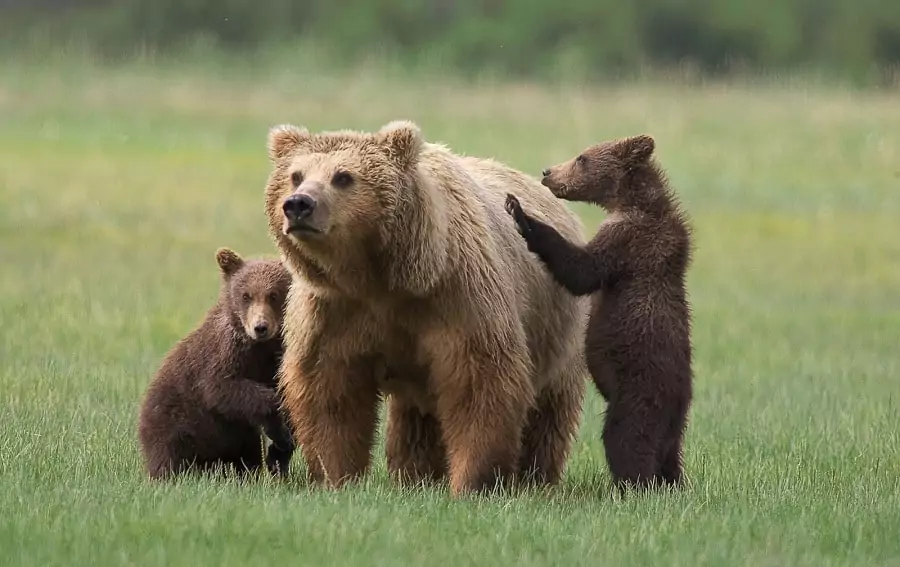
There is a difference in size between the coastal grizzly bear and the interior area bear, with the coastal one tending to be larger. You can recognize the grizzly bear by the following characteristics;
- He has a hump between the shoulders.
- He has a sloping back line.
- He has a concave shaped face.
- He has a large, light colored head.
- He has long curving claws.
The sloth bear- these bears mostly exist in the Indian subcontinent. They are the evolved species of the brown bear and mostly feed on termites and other insects.
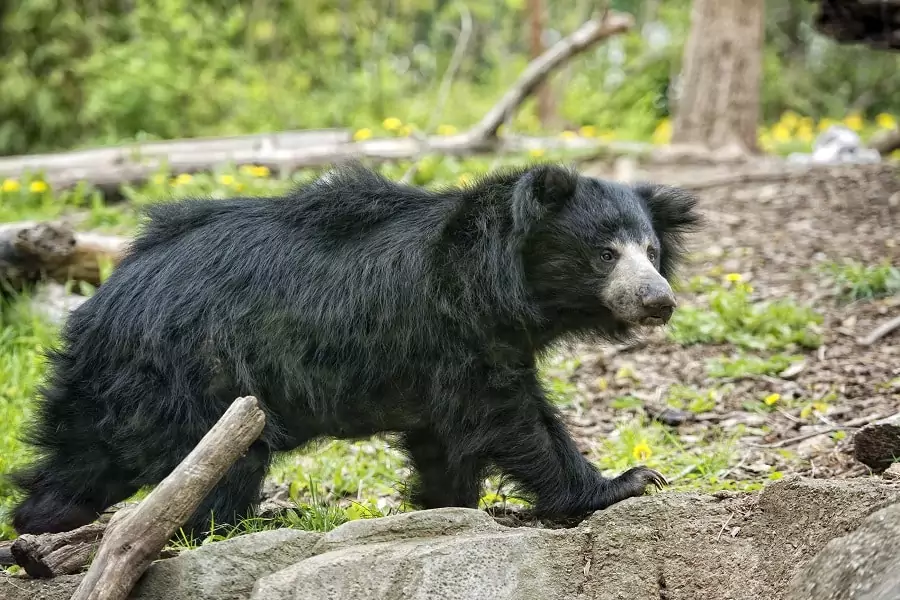
These types of bear are rarely known to attack humans but can do so in the case of territory invasion. Characteristics that make them recognizable include;
- Have a “Y” or “X” shaped cream color on the chest.
- They are thinner than the black and brown bears.
- They have long sickle-shaped claws.
- They have long shaggy fur that forms a mane around the face.
- They have a gap between teeth which enables them to feed on termites, ants, and other insects.
The polar bear– this is the largest and deadliest of all bears. It has adjusted well to living in cold waters, snow and ice hence making him familiar in the Arctic Circle. This habitat makes seal his first food.
However, at times he can cunningly stalk and attack humans.
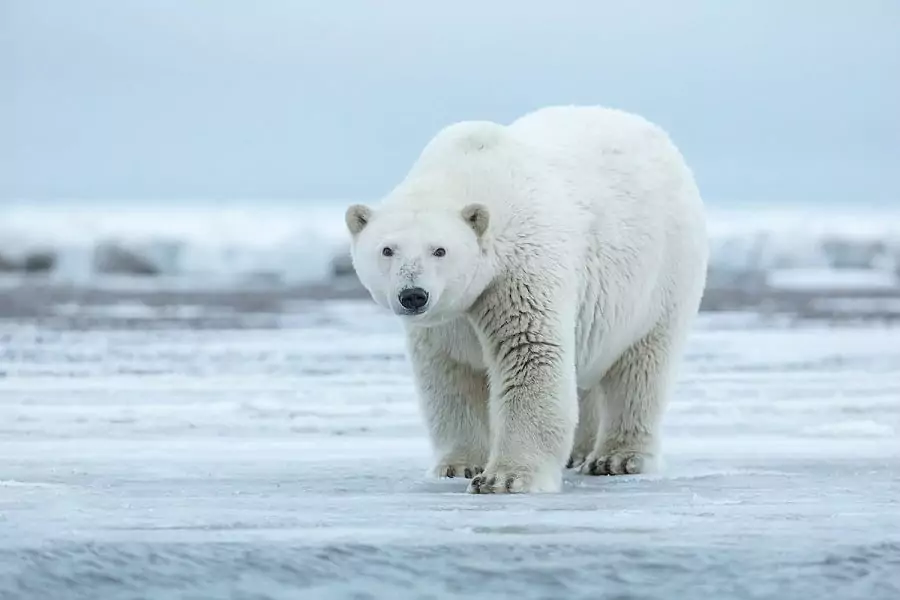
You can know you are dealing with a polar bear by checking out the following characteristics;
- Elongated body
- Longer nose and skull
- White in color
What Would Prompt A Bear into Attacking You?
As we have seen from the four species of bear, other than the polar bear, the other three will rarely attack you. We, therefore, need to look at what is it that prompts a bear to attack you.
This information is important in helping you not trigger the animal into coming on to you. You will also know the bears’ reason for attacking you, either offensive or protective. A bear will attack you if;
- She has cubs: a mother bear is a very dangerous creature if you walk anywhere near her children. Bear cubs are cute and can be tempting to hold. However, don’t be tempted as the mother is just around the corner. To protect her kids from you, she will have no options than attack you.
- To protect his territory: nobody likes having his territory violated. It is the same case with bears. If he feels that you are getting too close, he will attack you to keep you from his home.
- If you catch them by surprise: assuming you somewhere mind your own business and out of nowhere, somebody surprises you. Your first reaction will be getting alerted of the danger that has come and then plan to retaliate. It is the same case with bears.
- If they sense danger: we can say that bears too, as human beings, have sense. If a bear sense that you want to harm it, it will come on to you.
For other tips and tips on how to avoid other wild animal attacks, see our article on this topic.
How to Avoid A Bear Attack
There’s an adage that goes “protection is better than cure.” Avoiding a bear attack is wiser than having to deal with it when it attacks.

You can avoid an encounter with these dangerous animals by doing on of the following;
- Stay in the open and maintain the designated trails: bears most like to make their dens in dark caves or hollow logs. Avoid exploring such areas while hiking.
- Make noise while hiking: to avoid getting the animal in surprise, you need to make as much noise as you can. If in a group, converse loudly. Singing out in a loud voice can also alert the bear that you are near. Whichever means, avoid moving silently.
- Keep off the bear territory entirely: these animals don’t enjoy having their territories invaded. If not sure how close to their territory you are, use a pair of binoculars. This way you can easily spot them from a distance and change your track.
- Refrain from taking photos: in most cases bear attacks happen when victims are trying taking pictures. If you love your life, beware that bears are not friendly creatures and won’t entertain you capturing their photos. Leave that to the wildlife photographer professionals.
- Be untraceable: if camping, remember always to clean up your mess. Any food stuff should be cleared and discarded appropriately. This way, it will be hard for any bear to know that there are humans around.
What to Do in A Bear Attack
So, you have tried all the above measures to avoid a bear attack but still you get an encounter with one.
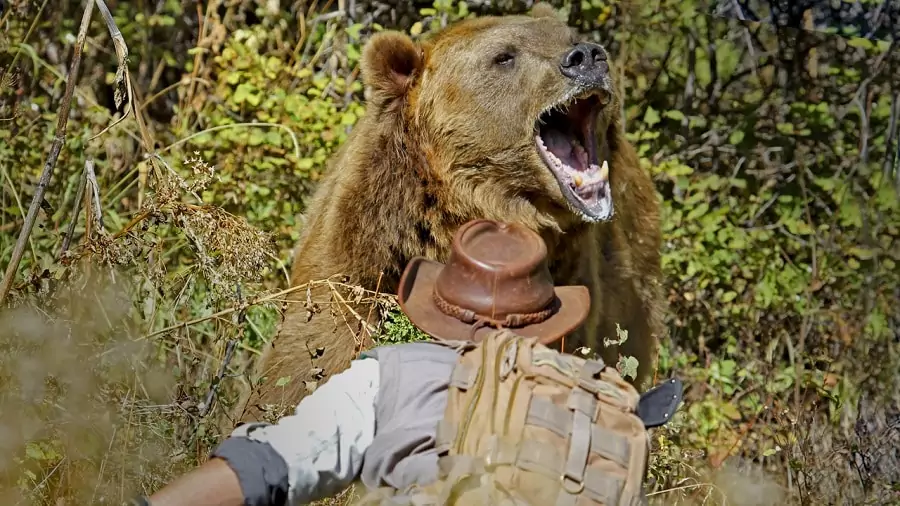
It won’t be a “hello brother bear” kind of a meeting. You, therefore, have to be smart how you handle it.
- Be calm and don’t panic. Otherwise, if you break into a run, you will only make the bear more agitated, and it will come after you.
- If you recognize the animal to be a black bear, stand tall and start making noise. Being a bit friendlier than the others, it will leave you in peace.
- Sometimes the bear might only be bluffing to see what you can do. If you have in no way provoked her, try talking to her in a friendly manner. Being friendly will calm her down, and she will leave you in peace.
- If it’s a grizzly bear, stay quiet and calm and be ready with your bear spray.
- Do not make a mistake of using the spray unless the bear is a few meters away from you. Remember using the spray will only make the bear angrier. You cannot, therefore, afford to miss.
- When dealing an attack from a grizzly bear, it is highly advisable that you play dead by going into a fetal position. This move will make you look vulnerable to the bear. No matter how much it snarls at you or tries to bite you, do not move an inch. Acting so will make the animal lose hope and leave you alone.
- Hide yourself using your backpack. While in the fetal position, protect your back using your bag. This way, when the bear tries to bite, he won’t reach you but instead bite the backpack leaving you unharmed.
- Run to the nearby tree and climb as high as possible. Black bears know how to climb trees but in the case of the other bears, climbing on a tree is a safer option than waiting to fight back.
- Do not try to fool the bear by hiding in a tent. It will follow you in by tearing it down since it is weak. This move is a very dangerous one considering there is no much space in the tent.
- Fight back with all you got. If no matter how hard you try the bear still won’t leave you alone, you have no option than fight back. You don’t need someone to tell you that it’s your life that is in danger. With all your energy make lots of noise and try to reach out for the bear’s eyes with your fingers. At all this time you should be very tactful to avoid his bites and scratches. In this case, your swiftness will be the best weapon.
- Learn about the bear’s weaknesses and use it against him. For instance, try attacking from behind rather than in front. The bear has such a neck structure that makes it hard for him to freely look behind him without having to turn his entire body.
How to be Prepared while Hiking/Camping in Bear-Prone Areas
If you love fun and enjoy outdoor activities, bears should be the last thing to deny you the opportunity.
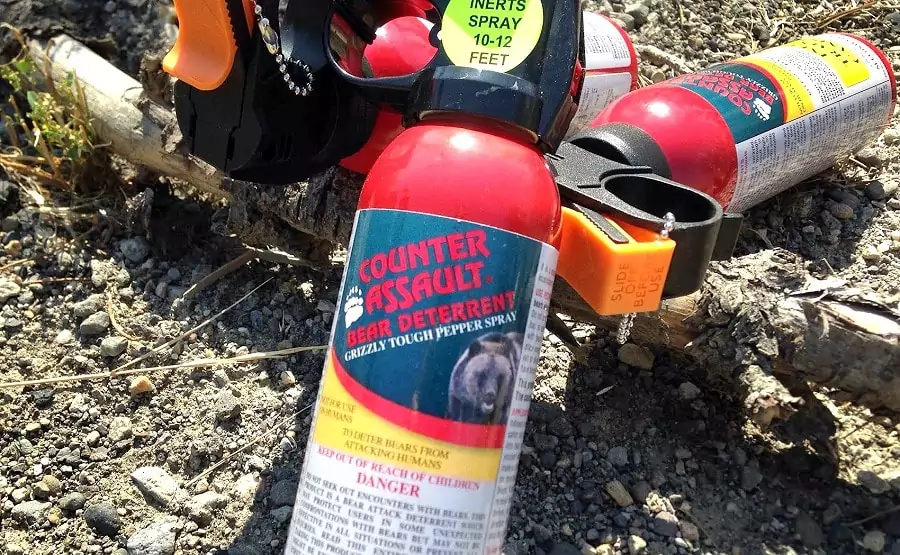
The secret is to go prepared that an encounter might happen.
- While packing your camping/hiking gear, remember to park your bear spray.
- Do not go out alone, be accompanied by friends. This way you will have someone to help you in case Mr. /Mrs. Bear appears out of nowhere.
- Always have your backpack with you. It will save you if you meet with a grizzly bear.
- Never underestimate the bear’s ability to spot you. According to scientists, the bear has as good eyesight as humans. If you can spot it from far, be sure it will also spot you. In this case, you can change direction to avoid a meeting.
- Always make sure you clean out any food stuff near your camping site. Keep remaining foods on trees high enough that it’s difficult for the bear to sense. See our list of the top odor-proof bags for backpacking to help you stay safe at camp.
- Carry powerful flashlights to use at night. You can use these to blind the animal if they pay you an expected visit.
- Be knowledgeable about how each type of bear poses for an attack. The knowledge will help you distinguish between a bluff attack and an upset one. The black bear moves in zigzag and tries to attack from undercover while the grizzly will give a direct charge.
- While hiking in the arctic, you need to be extra careful as polar bears have an adamant sense of smell. If you spot the bear from afar, it is better to run back to your car while there is still time. Otherwise, you will find yourself trapped in ice and a grievous animal.
Our article on the top pepper sprays to ward of potential bear attacks will be an eye-opener for you, so check it out.
Conclusion
You can easily avoid a bear attack by using one of the above measures. However if no matter how careful you are you still encounter one, use the tips discussed above to protect yourself.

While under a bear attack, never try to use a gun to protect yourself. Using a gun might get you in conflict with the wild animal protection unit as well as make you prone to getting serious injuries. Statistics from previous encounters have shown that people who try using a gun against bear get more injuries than those who use bear spray.
You should always know when to play dead and when to fight back. With the black bear, playing dead is never a good choice. The grizzly bear, on the other hand, requires that you play dead no matter how much it provokes you.
For more safety tips and tricks during your camping trips, see our invaluable article on this topic.

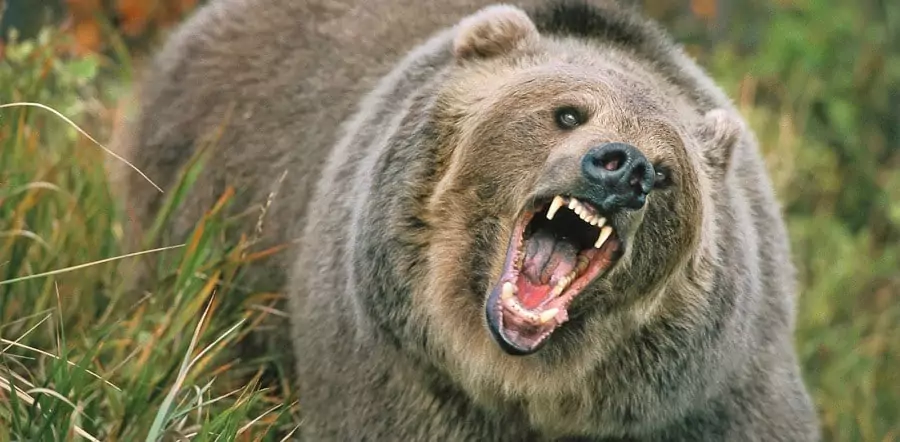






Thank you for sharing this very important safety knowledge. I now know so much more about bears and how to keep safe in the wildness. Every camper needs to read this article so they can be prepared for encounters with bears and other wild animals. You never know when you will come face to face danger so it s better to be prepared.
Try to learn a lot about the place you’re going to camp. Make sure you know the terrain well by asking those who have gone there before. You can also try googling the place. For me, I always make sure to have a bear spray with me and to practice presence of mind at all times.
We have all heard the terrifying tales of bear attacks in the wildness. It is good to be prepared for these types of attacks or attacks by any other wild animals. It is better to be safe than sorry. This article is important for co-existing with bears, after all, the wildness is their space and we are the invaders.
One of the things that we can do is to be proactive. Prepare for your trip by finding out if there are wild animals in the area. Make sure to ask from those who have been there before. It is also advisable to get a bear pepper spray and put that inside your pocket for good measure.
Above all else, don’t panic and have presence of mind at all times.